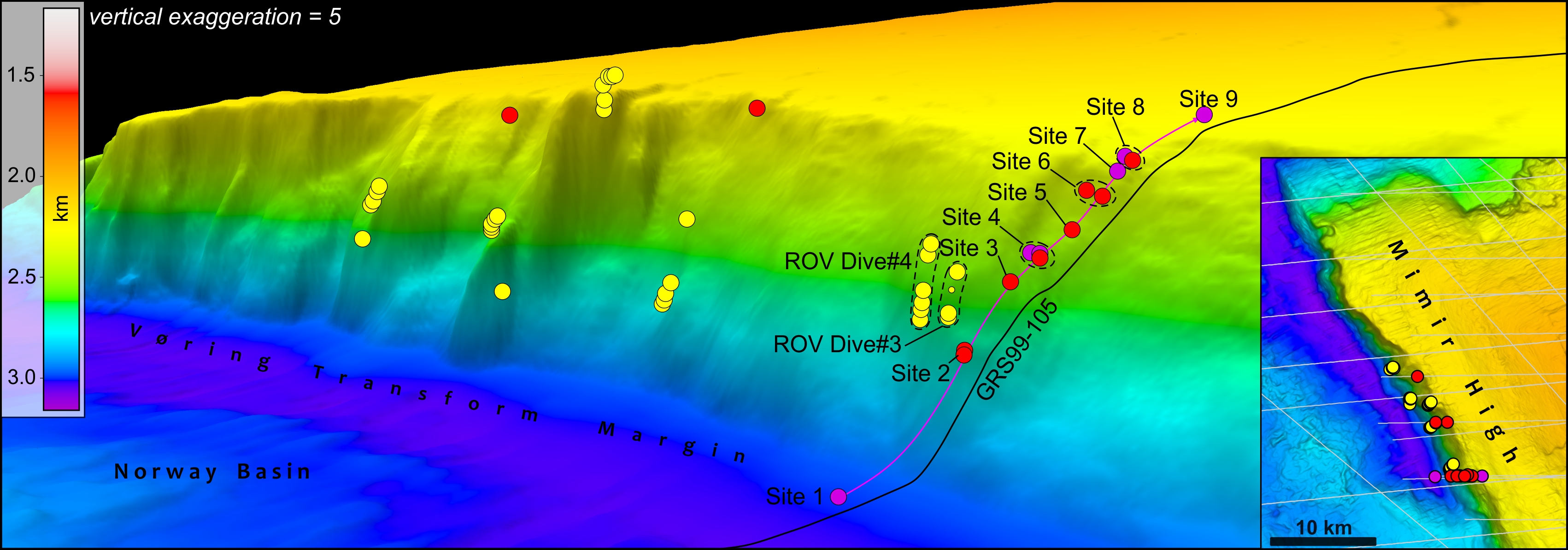Authors: S. Polteau, S. Planke, D. Zastrozhnov, M. Mansour Abdelmalak, N. Lebedeva-Ivanova, E. Eckhoff Planke, H. Hovland Svensen, A. Mazzini, L. Gernigon, R. Myklebust, B. E. Kjølhamar, R. B. Pedersen, N. R. Sandstå and S. Bünz.
The Mímir High located along the Vøring Transform Margin provides a unique opportunity to recover in situ rock fragments from outcrops at the seabed. Such data are crucial to calibrate and document the stratigraphy of this frontier area and to understand the tectono-magmatic development of the Vøring Transform Margin prior to, during and after continental breakup.
In this contribution, we combine and present the results from VBER seabed sampling of the Mímir High acquired during the Vøring Transform Margin Sampling VTMS00 and NPD 2013-B surveys carried out in 2000 and 2013, respectively. The samples were subsequently analyzed and dated using conventional sedimentology, organic geochemistry and biostratigraphy methods. Our results revealed that Upper Cretaceous to lower Eocene sediments and sill intrusions outcrop on the Mímir High.
We propose that during the Late Cretaceous-late Paleocene the proto-Vøring Transform Margin acted as an effective pathway to transport sediments from the emerged areas in the NE Greenland and Jan Mayen Ridge into the outer and distal Møre and Vøring basins as turbidite sequences. Our results provide a stratigraphic basis for future IODP drilling campaign in 2021, where the Mímir High is one of the key targets to drill.
Link to paper (50 days free access)
